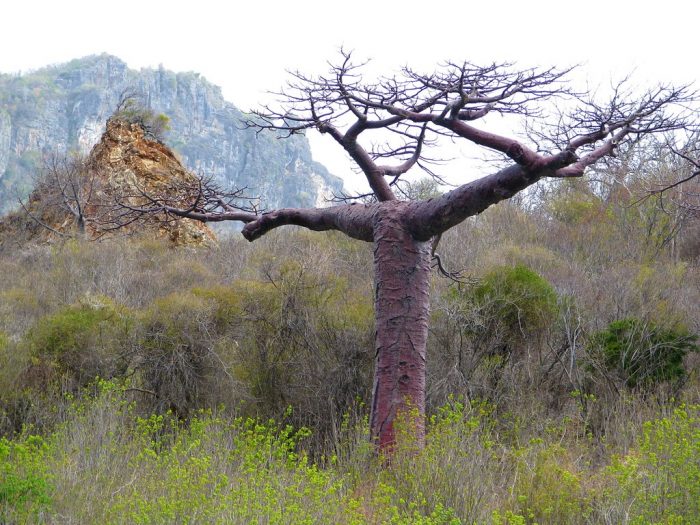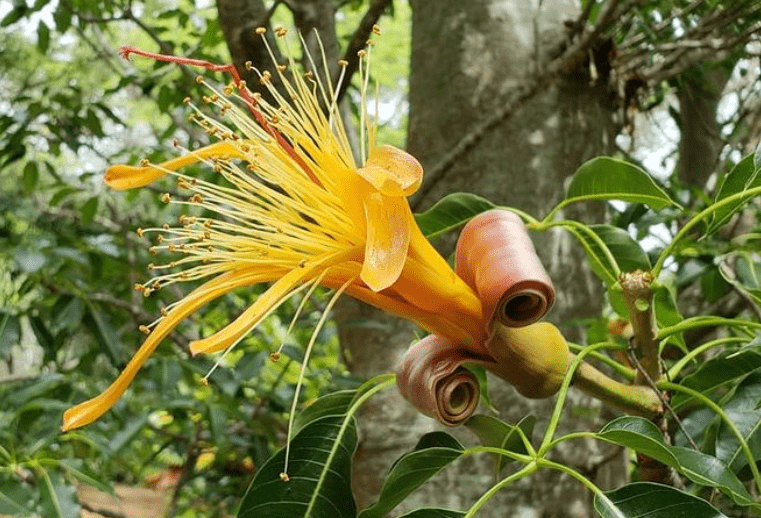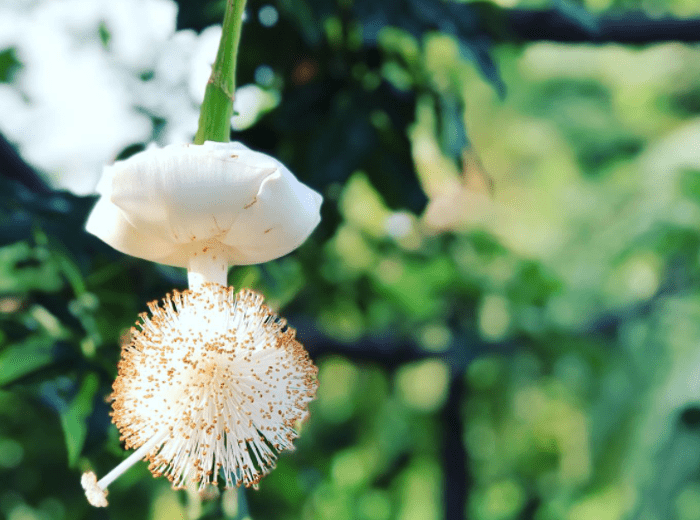Baobab tree (Adansonia): the best tree of life species

The baobab tree (Adansonia) known also as the tree of life is a magnificent giant tree belonging to the Bombacaceae family. This wonderful tree has unusual barrel-like trunks and has also extraordinary longevity and ethnobotanical importance. The baobab is not just one tree, but nine deciduous species in the genus Adansonia. Six of the species (Adansonia grandidieri, A. madagascariensis, A. perrieri, A. rubrostipa, A. suarezensis, and A. za) are endemic to Madagascar. Then, two (A. digitata and A. kilima) are native to mainland Africa and the Arabian Peninsula, and one (A. gregorii) is native to northwestern Australia. Many species have edible leaves and fruits and are important for a number of herbal remedies.
Find out in this article the names and descriptions of each Baobab species.
Baobab species
Adansonia digitata

Adansonia digitata is called by Africans the magic tree, the pharmacist tree or the tree of life. It is the most distinctive tree in the continent that grows in the African Savannah. This African tree has also a huge trunk ranging in height from 5 to 20 meters and branches that look like roots. Moreover, the tree is often wider than it is tall and largely leafless for much of the year.
Adansonia kilima

Adansonia kilima is a distinct species from Adansonia digitata, but it is also native to mainland Africa and the Arabian Peninsula. This species is newly discovered and described in 2012. Like other baobabs, we can easily recognize them by the swollen base of their trunk. This base forms a massive caudex, giving the tree a bottle-like appearance.
Adansonia grandidieri

Grandidier’s baobab is a species of tree belonging to the Bombacaceae family and native to Madagascar. Local population call Adansonia grandidieri ‘Renala’ or ‘Reniala’, meaning ‘mother of the forest’ because of its many uses. They can then eat the fruit pulp and seeds fresh, and extract oil from the seeds. Furthermore, the fibrous bark makes rope and the undried spongy and fibrous wood can feed cattle. This tree is also the largest and most majestic of the baobab trees in Madagascar. It can reach 25 meters in height, and 3 meters in diameter and live for more than 2000 years.
Adansonia madagascariensis

Adansonia madagascariensis or Madagascar baobab is a large deciduous tree in the family Malvaceae. This Madagascar tree can exceed 25 m in height, and its trunk can reach several meters in diameter. These Baobab leaves are deciduous and fall in the dry season. As for the Baobab flowers, they are erect and pink-red in color with long yellow stamens. We can also harvest this African Baobab tree from the wild for local use as a food and source of fibre.
Adansonia perrieri

Perrier’s baobab is one of six species of baobab endemic to Madagascar. It can live up to 1.000 years if it lives in the right conditions. If we compare this deciduous tree to other trees, it is not too high since it usually reaches 30 meters. However, the diameter of the very thick and large trunk can reach 11 meters. Sometimes, local populations harvest the tree from the wild for local use of its edible fruit.
A. rubrostipa

Adansonia rubrostipa or Fony Baobab is a crazy-looking deciduous tree in the Malvaceae family. This small to medium-sized Baobab is generally known for its smooth red or ocher bark. In nature, this species forms beautiful flowers that are pollinated by a stingray butterfly. Local populations harvest this plant from the wild for local use as food and as a source of thatch. They also sold edible Baobab fruits in local markets.
A. suarezensis

Adansonia suarezensis or Suarez baobab is a Baobab tree also native to Madagascar. This tree has an irregularly swollen trunk 20 to 30 m high. In the wild, the spongy trunk serving as a reservoir develops almost horizontal branches, also swollen. We can also harvest this plant from the wild for food and medicinal uses. Unfortunately, this rare species is endangered by habitat loss and is little known in cultivation. However, it is ideal as a houseplant or as a bonsai.
A. za

Adansonia za is a deciduous tree with a sparse, rounded crown. It is very similar to Adansonia madagascariensis Baill. but these two species cannot always be clearly distinguished. We can eat the fruit pulp and oil-rich seeds of this Baobab species, as well as the seedling roots.
Adansonia gregorii

The Boab tree or bottle tree is a deciduous tree which occurs in the Kimberley region of Western Australia and east into the Northern Territory. It is the only Adansonia to occur in Australia. It has also a huge bottle-shaped trunk that is filled with soft fibrous wood, enabling it to store water. Furthermore, scientists recorded an extremely large trunk base with trunks of a diameter of over 5 metres.
Baobab flowers
Finally, here are some Baobab flower pictures that anyone will absolutely enjoy!



Did You find this helpful? Share it with your friends!